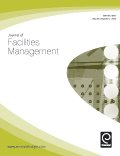
Next month, I'm off to Las Vegas to attend a conference on business continuity, security and emergency management planning. The event, CPM 2006 West, is organized by CPM Group, whose website at
www.ContingencyPlanning.com is on our list of important business continuity planning links in the sidebar on the right of this weblog.
Subscribers to the
CPM-Global Assurance newsletter got a special introduction to the upcoming conference that includes discussions by some of the presenters, including an article of mine on the importance of pandemic planning. "
Learning from the Past: How SARS can create a valuable planning proxy for avian influenza" is an introduction to my presentation on Workplace Continuity, a subject we focus on and discuss often on the
Gill Blog. But there's nothing like getting together face-to-face with experts from other disciplines and catching up with many of the interesting folks I've met through this weblog and at other industry functions.
So, it's off to Las Vegas next month for some fun work and serious play. Make a note in your calendar to attend CPM 2006 WEST and form a Global Alliance for Survival. Come together with your peers to interact in an educational forum and take away the knowledge to save your organization. Gain a new network of support from the industry experts, thought-leaders and professionals who attend. Please give me a call, or
drop me a note in an email, if you'd like to meetup at the conference in Vegas.


